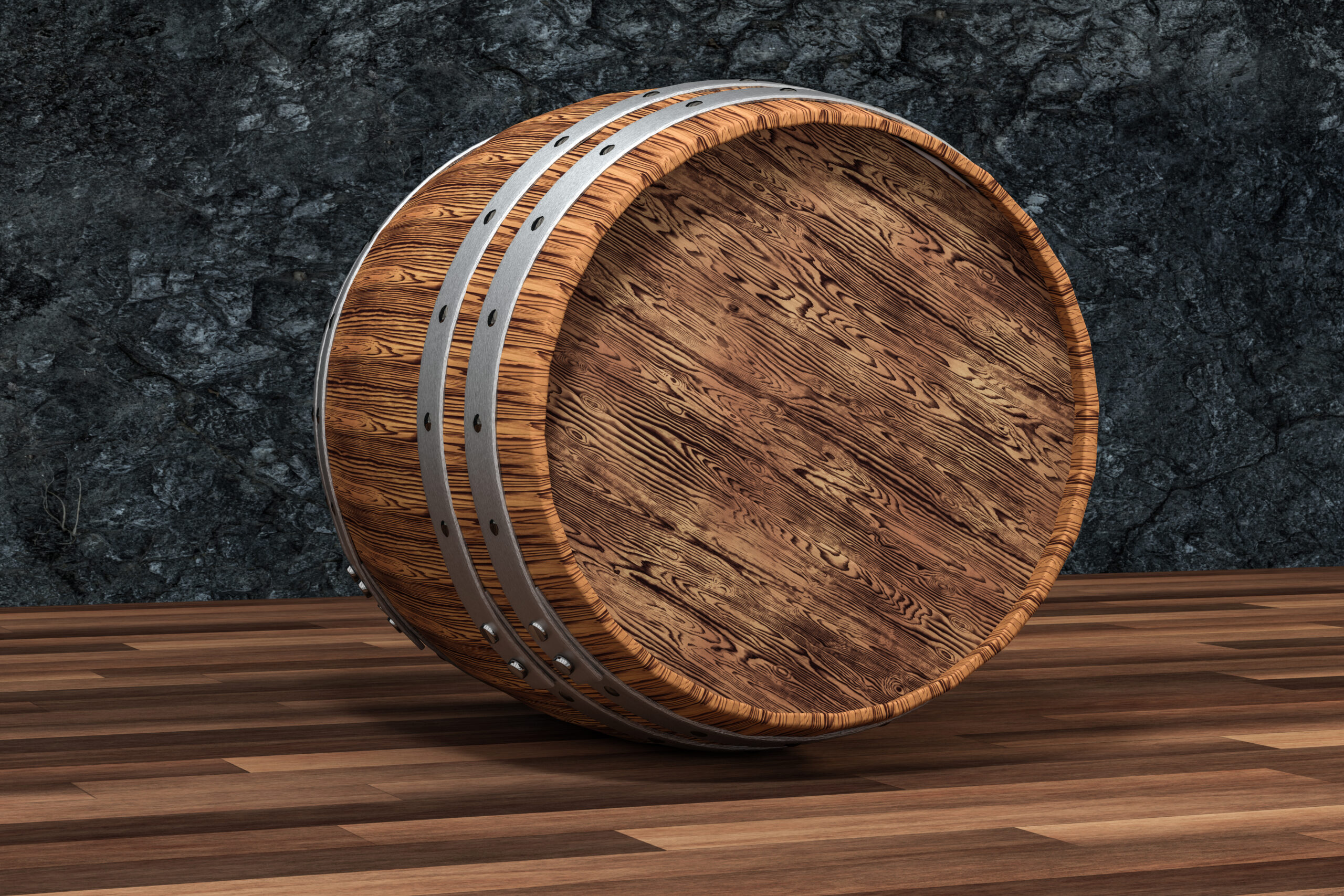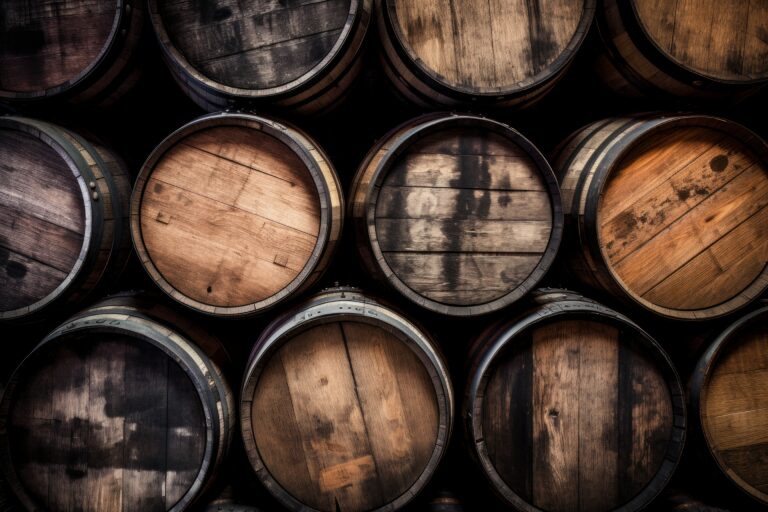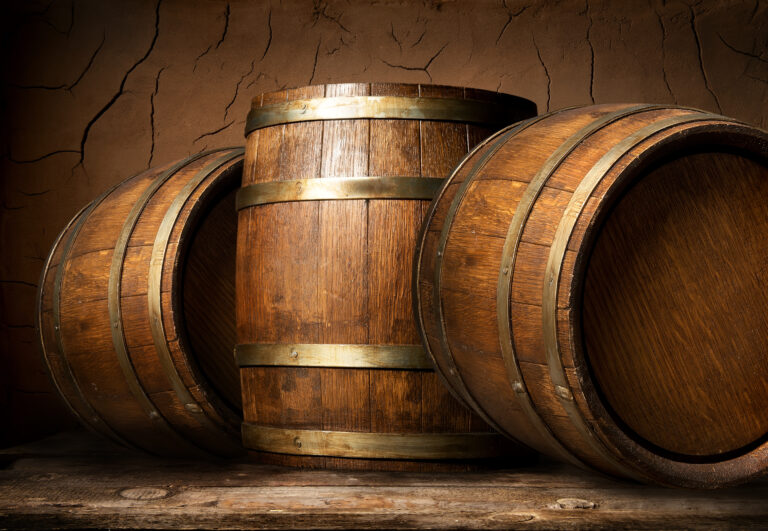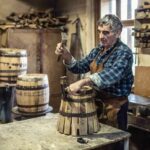Ever wonder about the secret ingredient that makes your favorite whiskey so good? It’s not just the grain or the distillation process—it’s the humble oak barrel. As a whiskey lover, you know these casks are more than just containers; they’re where the magic happens, transforming new-make spirit into a complex, flavorful drink. For a distillery, especially one focused on high-quality, aged spirits, these barrels are a serious financial commitment. We’re not just talking about one or two barrels—we’re talking about warehouses filled with thousands of them, each one a significant investment. So, how much does one of these charred oak whiskey barrels actually cost? The price might just surprise you. Let’s dig into the real numbers behind whiskey barrel prices and what makes them so expensive.
An Introduction to Whiskey Barrels and Their Cost
Whiskey barrels are a bigger investment than you might think. A brand new charred oak barrel can run anywhere from $200 to over $1000, depending on its size and the type of oak used. If you’re a craft distiller or a hobbyist looking for something more affordable, a used bourbon or sherry cask is a great option, typically costing between $50 and $200.
- A standard 53-gallon barrel, the kind you’ll find at most distilleries, will set you back several hundred dollars. These are the workhorses of the industry.
- For home aging projects, smaller 5 to 10-gallon barrels are a great entry point, but they still come with a price tag of $100 to $300.
- American white oak barrels are often pricier than their European cousins from Spain or France.
- If you’re after those deep, smoky flavors, you’ll pay more for barrels that have been heavily toasted or charred, a process that creates a more intense interaction between the wood and the whiskey.
While a thousand bucks for a single cask might seem like a lot, when you consider that a quality whiskey barrel can be used to age spirits for years—or even decades—the cost per bottle becomes much more manageable. And when that aged whiskey hits the shelves at a premium price, that initial investment pays for itself many times over. For distillers and home aging enthusiasts alike, investing in the right high-quality barrel is absolutely worth it. With the right care, these barrels can last a lifetime, imparting complex and desirable flavors that only time and great oak can provide.
The Different Types of Whiskey Barrels
Not all whiskey barrels are created equal. They come in various shapes, sizes, and a few key types that are essential for any whiskey connoisseur to know: charred oak barrels, used bourbon barrels, and sherry casks.
Charred Oak Barrels
Brand new charred oak barrels are the go-to for aging bourbon and other whiskeys. The deep char on the inside of the barrel, a process that’s almost like burning the wood, is what gives bourbon its signature vanilla, caramel, and spice notes. This intense charring is a key part of the bourbon-making process and is required by law.
Used Bourbon Barrels
Once a barrel has been used for bourbon, it can’t be used for new bourbon again. But that’s not the end of its life! These ex-bourbon barrels are highly sought after by Scotch and Irish whiskey distilleries, as well as rum producers. They lend lighter, sweeter flavors with subtle hints of oak and vanilla. The remnants of the previous spirit add layers of flavor complexity that make for a truly unique expression.
Sherry Casks
Sherry casks, which previously held sweet fortified wine from Spain, are another popular choice, particularly for aging Scotch whisky. The sherry-soaked wood infuses the whisky with delicious flavors of dried fruit, nuts, and warm spices. This type of barrel also allows for more interaction between the wood and the spirit, resulting in a distinct reddish hue that whiskey fans love.
With all these different barrels available, distillers have a diverse toolbox to craft a whiskey with a truly unique flavor profile. The barrel is, without a doubt, the single most important factor in determining a whiskey’s taste and aroma.
Factors That Influence Whiskey Barrel Prices
The price of a whiskey barrel can swing wildly based on several key factors.
Type of Wood
The type of wood, almost always oak, is a huge factor in the final cost. Higher-quality, tighter-grained wood that imparts more flavor and complexity to the whiskey will naturally cost more. American white oak and European oak are two of the most popular and expensive options.
Char or Toast Level
How much the inside of the barrel is charred or “toasted” also influences the price. Barrels with a heavier char—those that give the whiskey a smokier, richer flavor—are typically more expensive. On the flip side, barrels with a lighter toast are usually more affordable.
Barrel Age
When it comes to used whiskey barrels, age is a big deal. Older barrels that have held whiskey for a long time, sometimes for decades, are seen as more desirable and command a premium price from distillers and collectors.
Scarcity
Basic supply and demand plays a significant role. When there’s a limited supply of high-quality oak or a shortage of specific types of barrels, like those used for bourbon, prices go up. Finding a specific type of used barrel can be a real challenge, driving prices even higher.
Ultimately, the most significant factors in a whiskey barrel’s price are the wood type, the toast or char level, the age and origin of a used barrel, and overall market demand. Since barrels are so crucial to crafting a high-quality whiskey, distillers are often willing to pay a premium for the best.
The Cost of New Barrels: Breaking It Down
New American oak barrels generally fall between $200 and $1000, depending on their size and specific features. A standard 53-gallon bourbon barrel will likely cost you somewhere in the $500 to $700 range. French oak barrels often carry a slightly higher price tag, costing $50 to $100 more than their American counterparts.
The barrel’s origin and toast level also matter. Barrels from regions known for top-tier oak, like the Ozarks or the Appalachian mountains, are more expensive. A medium or heavy toast, where the inside of the barrel is charred for a longer period to develop those complex flavors, will also add to the price. Some distilleries even invest in custom barrel toasts to create a truly unique flavor profile for their spirits, which is the most expensive option of all.
Beyond the barrel itself, there are other necessary costs. You’ll need barrel stands, which can cost $30 to $50 each, and barrel racks for larger operations, which range from $200 to over $2,000 depending on their size and material. Don’t forget accessories like a barrel filler, thief, hammer, and bung wrench—these can add up to another $50 to $500. The good news is that with proper care, a high-quality barrel can be reused to age multiple batches of whiskey for 3 to 10 years, helping you maximize your initial investment.
Used Whiskey Barrel Prices
Used whiskey barrel prices can be all over the map, based on the type of wood, size, age, and overall quality.
Smaller Barrels
For home distillers, 5- to 15-gallon barrels are a popular and affordable choice, typically ranging from $100 to $500. They’re a perfect way to experiment with different aging techniques without the commitment of a full-size barrel.
Standard Barrels
Used 53-gallon ex-bourbon barrels are extremely common, and their prices typically hover between $200 and $500. The price is often influenced by the distillery it came from—a barrel from a highly sought-after brand will command a higher price.
Large Barrels
For small-scale craft distilleries, 60- to 100-gallon barrels are a solid choice, usually costing between $300 and $1000. These larger barrels require more whiskey to fill but allow you to age a greater volume at once.
At the end of the day, a used barrel’s price comes down to its quality, scarcity, and how much a buyer is willing to pay. Rare, high-quality barrels from top-tier distilleries that produce highly coveted whiskeys will always fetch the highest prices from collectors and craft distillers looking to create a one-of-a-kind spirit.
Barrel Size and Its Impact on Cost
It’s simple: the bigger the barrel, the bigger the price tag. Larger barrels, like the 53-gallon casks used for bourbon, cost more than smaller barrels because they require more wood and more craftsmanship to build.
- A full-size bourbon barrel might cost you $150 to $200.
- In comparison, a small 5- to 10-gallon barrel could be as low as $50 to $100.
The oak wood, metal hardware, and labor are the main reasons why larger barrels are more expensive. For someone just starting out with home distilling, a small barrel is a much more affordable and accessible way to get into the world of barrel-aging. Just be aware that whiskey ages faster in smaller barrels, so you have to keep a close eye on it to avoid “over-oaking.” For a professional craft distiller, investing in full-size barrels is really the only way to go, despite the higher upfront cost.
The choice of barrel size ultimately depends on how much whiskey you want to age and your budget. The good news is that with proper care, a quality barrel can last for decades, aging countless batches of whiskey over its lifetime. It’s an investment that can really pay off in the long run.
Extra Costs Beyond Just the Barrel
The barrel itself is just the beginning. There are several other expenses to consider if you’re serious about your own whiskey barrel aging program.
Barrel Maintenance
To ensure your whiskey ages beautifully, you’ll need to maintain your barrels properly. This includes:
- Regularly inspecting for leaks or cracks and making repairs as needed.
- Rotating and turning barrels to ensure the spirit ages evenly.
- Controlling the temperature and humidity in your aging space, as a consistent environment is crucial.
Bottling
When your whiskey is finally ready, you’ll need to bottle it. This requires:
- Bottles, corks, and custom labels to make your whiskey ready for sale.
- A bottling line or other equipment to fill and seal the bottles.
- Designing and printing those eye-catching labels that reflect your brand.
Taxes
Don’t forget about the taxman! You’ll need to pay federal and state excise taxes on the whiskey you produce and sell. These taxes are calculated based on the volume of whiskey you pull from the barrel. You’ll also owe standard income and sales taxes.
When you add up all these costs, the total investment is significant. But for many distillers, the final reward of creating a premium, aged whiskey makes all the effort and expense completely worth it. The care and craft that goes into every step of the process is what truly defines a great whiskey.
Tips for Finding a Great Deal on a Barrel
Looking to save a few bucks? Here are some insider tips for getting a good deal on a whiskey barrel:
- Check auction sites and classifieds for used barrels. Many distilleries sell off their used barrels, and you can often find them for a fraction of the cost of a new one. It’s a great way to find a pre-seasoned cask.
- Don’t be afraid to negotiate. Especially for used barrels, sellers are often open to offers below the asking price. Do a little research to know the fair market value, so you can make a smart offer.
- Buy in bulk. If you plan on aging and bottling your own spirits, consider buying multiple barrels at once. Suppliers often give significant discounts for larger volume orders, ensuring you have the barrels you need while saving money.
- Shop directly from the cooperage. Cooperages (the folks who make the barrels) sometimes sell directly to individuals and small businesses. Cutting out the middleman and their markup can lead to some serious savings on a brand new barrel.
- Compare prices from different suppliers. Barrel prices can vary quite a bit between different cooperages and distributors. A little online comparison shopping or a visit to a whiskey festival can help you find a company that offers barrels at a significantly lower cost, even after factoring in shipping. A little extra effort can go a long way.
FAQ – Your Top Whiskey Barrel Price Questions, Answered
Q: How much does a used whiskey barrel cost?
A: Used whiskey barrels generally run from $100 to $200. The exact price depends on its age, size, and what it previously held. Barrels that aged bourbon for a longer period of time typically cost more.
Q: What is the cost of a new whiskey barrel?
A: A new charred oak barrel, specifically for aging whiskey, usually starts around $500 and can go over $1,000, depending on the barrel’s size and the type of oak. American white oak barrels are generally more expensive.
Q: What are the most common whiskey barrel sizes?
A: The most popular sizes for whiskey are the 53-gallon “bourbon barrels” and 63-gallon hogsheads. Smaller sizes, like 11-15 gallons, are popular with craft distilleries.
Q: Does the char level impact the price?
A: Absolutely. The level of char on a new barrel affects the price. A heavier char, like a #4 “alligator” char, can cost 10-30% more than a standard #3 char because it creates more complex flavors.
Q: What is a typical whiskey barrel lifespan?
A: On average, a whiskey barrel can be reused 2-5 times before the wood is too saturated to continue aging whiskey effectively. After its aging life is over, barrels are often repurposed as decor, planters, or for aging other products like coffee or beer. Some barrels are nearly 100 years old!
Final Thoughts
So, there you have it. The journey of making whiskey is a labor of love, and the barrels are a huge part of what makes the final product so delicious. While the initial investment in high-quality barrels might seem steep, when you think about the years of aging and the value of the finished whiskey, it’s really just a drop in the bucket. The next time you enjoy a glass of bourbon, rye, or Scotch, take a moment to appreciate the subtle flavors imparted by the wood. Your taste buds and your wallet will both thank you for the knowledge.







